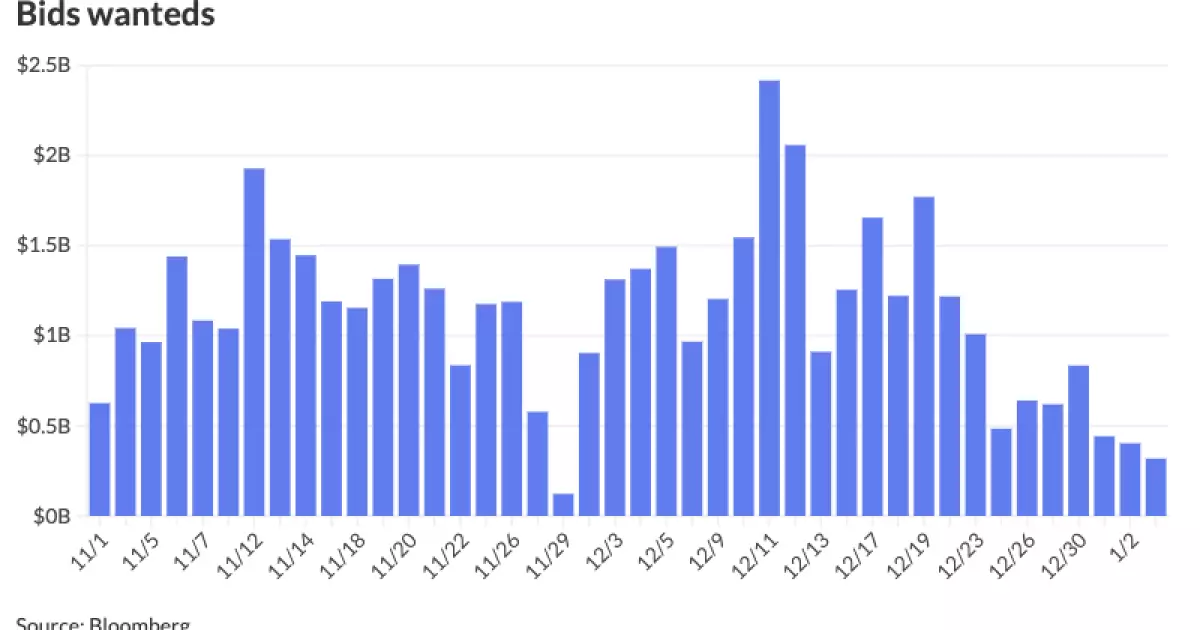The municipal bond market has witnessed a period of notable transformations as we approach the conclusion of 2024. Despite a mixed performance within equities and incremental increases in U.S. Treasury yields, municipalities have exhibited a relatively stable tone. As tax-related trading gains momentum and the market contends with macroeconomic uncertainties, the dynamics surrounding municipal bonds warrant a closer inspection.
On Monday, municipal bond yields displayed little movement as U.S. Treasury yields experienced a slight uptick. This juxtaposition resulted in a subtle decline in the ratios of municipal bonds to UST (U.S. Treasury) yields. With the two-year municipal to UST ratio at approximately 65% and the 10-year at 66%, the data reflects a cautiously persistent environment that is indicative of the market’s broader sentiments. However, the indications from J.P. Morgan strategists suggest that we might be on the cusp of favorable entry points for investors as tax-exempt rates climb close to one-year highs.
The bond market’s trajectory has been influenced significantly by the convergence of year-end trading positions and evolving macroeconomic policies. Daryl Clements from AllianceBernstein stipulates that despite a volatile December, there has been a semblance of stability within the market, illustrating a resilient nature in the face of rising yields—a situation compounded by tax-loss harvesting activities observed in recent weeks.
The municipal market has experienced both gains and losses in a remarkably complicated environment. Over the past week, two-year AAA municipal yields dipped by six basis points, while ten-year yields reduced by four basis points. Overall, munis reported an upward shift of 0.61% for the week, yet they faced a monthly decline of 1.46%. Such fluctuations reveal the ongoing stresses of market outflows, which experts like Clements attribute to strategic tax-loss harvesting as the year concludes. Nevertheless, a sustained outflow is not anticipated moving forward, potentially indicating an opportunity for renewed capital inflow.
Additionally, the issuance of municipal bonds in late 2024 was characterized by a considerable lag, contrasting with an overall record figure exceeding $500 billion throughout the year. Issuance slowed dramatically toward year-end, with only $4 billion coming to market in the final three weeks. This is a stark contrast to the robust figures routinely observed during 2024.
As participants in the municipal market turn their attention to 2025, an influx of new supply is anticipated, with an estimated $5.18 billion set to debut in the first full week of January. This rebound from the anemic issuance observed in December holds promise; however, it remains below the pre-2024 averages exceeding $10 billion per week. According to analysts, the 2025 municipal issuance is projected to hover around the $500 billion mark, though there are cautious voices suggesting potential growth past this benchmark due to expected legislative evolutions.
J.P. Morgan’s view highlights a gradual normalization of the municipal yield curve as short-term yields appear poised to decrease, aligning with the Federal Reserve’s rate-cutting outlook—albeit at a slower pace than originally envisioned. This could introduce attractive starting points for municipal bond strategies, leveraging the market’s evolving credit profile.
Income generation was a key performance driver throughout the past year, a trend that analysts believe will persist. There is a prevailing sense among experts that lower-rated bonds, traditionally viewed as higher-risk assets, may outperform amidst compelling income prospects. This performance, however, is likely to be driven more by carry than by significant spread compression—a crucial distinction for investors seeking risk-adjusted returns.
Credit fundamentals also indicate strength, yet the evolving landscape demands vigilance. The strength seen in “rainy-day” funds is projected to support municipal credit quality, with anticipated balances representing 14.4% of general fund revenues— an all-time high level that underscores the financial preparedness of many issuers.
While the municipal bond market is navigating intricate challenges, a strategic outlook rooted in emerging opportunities and fundamental strengths may provide a pathway for investors. As we venture into 2025, a well-informed approach that considers both current conditions and future developments will be paramount in capitalizing on this segment’s unique potential.


Leave a Reply